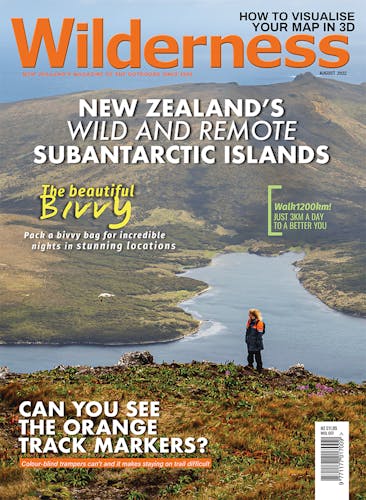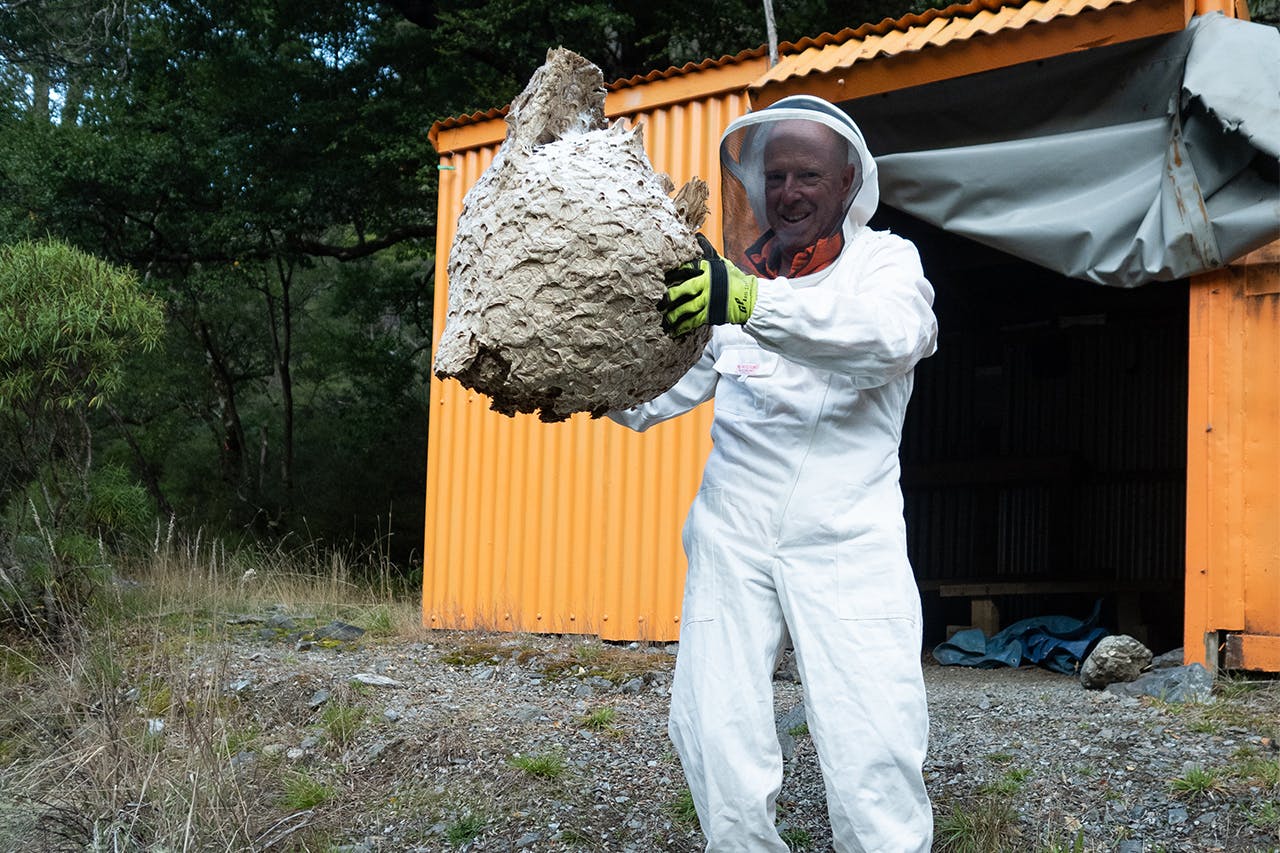A couple of hunters got a little more than they bargained for at Rockslide Hut in Ruahine Forest Park.
“A half-metre round, heaving mass above one of the bunk beds” is how Backcountry Trust’s Megan Dimozantos described the German wasp nest reported by the hunters. It was the largest wasp nest she had seen but not the largest ever recorded. That title goes to a 3.7×1.75m nest found in Waimauku, Auckland, in 1963.
The nest was removed by DOC during inspection flights in the northern Ruahine Range in April.
DOC Manawatū supervisor Kelly Hancock said people should avoid wasp nests in or near huts and tracks, “and contact DOC as soon as possible, so we can deal with it”.
Most of DOC’s wasp control was done in response to reports from the public, Hancock said.
“We do some proactive control of wasp populations, usually in places with high visitor numbers where wasp populations are a known problem.”
Last summer, work was carried out in Te Āpiti/Manawatū Gorge and Tōtara Reserve using Vespex, a meat-based bait that is not attractive to bees.
According to Manaaki Whenua Landcare Research, Aotearoa has the world’s highest densities of German and common wasps, which harm native birds and insects.
The introduced wasps have no natural predators in New Zealand but plenty of food, and some nests survive over winter.








